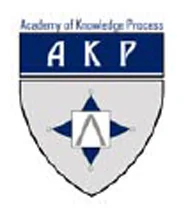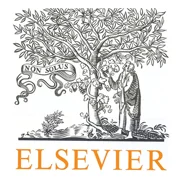دانلود ترجمه مقاله فناوری برنامه ریزی منابع سازمانی(ERP)، وجه اشتراک تقاضای فروش، تولید صنعتی و بازاریابی
| عنوان فارسی |
فناوری برنامه ریزی منابع سازمانی(ERP)، وجه اشتراک تقاضای فروش، تولید صنعتی و بازاریابی |
| عنوان انگلیسی |
Enterprise Resource Planning (ERP) Technology; Sales Demand, Manufacturing and Marketing Interface |
| کلمات کلیدی : |
برنامه ریزی منابع سازمانی (ERP)؛ تقاضای فروش، بازاریابی و تولید صنعتی (SDM&M)؛ وابستگی؛ بازگشت سرمایه گذاری (ROI)؛ ادغام |
| درسهای مرتبط | مدیریت برنامه ریزی سازمانی |
| تعداد صفحات مقاله انگلیسی : 12 | نشریه : Contemporary Business Studies |
| سال انتشار : 2013 | تعداد رفرنس مقاله : 19 |
| فرمت مقاله انگلیسی : PDF | نوع مقاله : ISI |
|
پاورپوینت :
ندارد سفارش پاورپوینت این مقاله |
وضعیت ترجمه مقاله : انجام شده و با خرید بسته می توانید فایل ترجمه را دانلود کنید |
1. مقدمه 2. بررسی مقالات 3. روش تحقیق / مدل 4. جمع آوری داده ها 5. مفاهیم، محدودیت ها و تحقیقات آینده 6. نتیجه گیری

1. مقدمه: رقابت های پرخاشگرانه، کسب و کار را تحت فشار قرار داده اند تا برای معرفی و تعدیل محصول جدید به تقاضا نزدیک تر باشد.به طور همزمان پیچیدگی محیط پیرامونی تقاضای محصول رو به افزایش است.برای مثال،تطبیق و هماهنگی برای بسیاری از واحدهای تجاری چالش برانگیز است چنانکه عملیات آنها به طور رو به افزایشی درمیان سایر تهیه کنندگان، و کانال های توزیع و فروش از لحاظ جغرافیایی و سازمانی پخش شده است.شرکت های تولیدی می توانند به روشهایی واکنش نشان دهند(که متقابلا منحصر بفرد نیست).یکی از واکنش ها افزایش ظرفیت یا بافر موجودی است.(Galbraith ،1973؛ Newman,Hanna&Krause ،2000).با این وجود بسیاری از صنایع درمی یابند که قابلیت دوام این گزینه رو به کاهش است.واکنش دوم ساده سازی تولید بر طبق سهمیه ی تقاضا از فروش و سایر فرایندها است) Krajewski, King, Ritzman Wong& ،1987؛Huson,Nanda 1995؛ Schroder ,Morris 1997).واکنش سوم افزایش یکپارچگی بین تقاضای خرید،بازاریابی و تولید صنعتی است که ممکن است برای یک واحد کاری، اطلاعات موجود را درباره ی شرایط سایر واحدهای کاری یا شرایط محیط خارجی افزایش دهد.(Wheelwright, Haves 1985، Adler 1995، Hauptman ,Hirji 1996). گزینه ی سوم،افزایش یکپارچگی SDMو M توسط شرکت ها تصمیمات متعددی دارد. اساسی ترین تصمیم در این میان این است که:چه فرایندی باید یکپارچه گردد و چگونه.در پاسخ به سوال اول،محققان نشان داده اند که یکپارچگی تقاضای فروش،بازاریابی و تولید صنعتی(SDMو M) همیشه منجر به افزایش نتایج و درامدهای مربوط به عملکرد بوده است.در پاسخ به سوال دوم،100 شرکت تصادفی با اندازه متوسط برای برنامه ریزی منابع سازمانی (ERP) – با عنوان یکپارچگی کلی کسب و کار- در یک بستر نرم افزاری انتخاب شدند که منجر به افزایش یکپارچگی بین عملکردهای تجاری شدند(META Group, 2004 ).علی رغم شواهد اولیه ی معکوس، سیستم هایERP مزایا را به طور میانگین بین شرکت ها تسلیم می کنند.( Anderson, Banker and Ravindran, 2003 ).با فکر کردن درباره ی اینکه این بازده ناشی از کجا و چطور است،تنها جایی که ممکن است انتظار داشته باشیم که بازده نهایی بزرگی از ERP ببینیم در وجه اشتراک بین SDM&M است.با این همه،همانند یک سیستم کارکردی متقابل چندگانه،ERP باید کارایی را با بهبود هماهنگی بین تقاضای فروش،بازاریابی و تولید صنعتی افزایش دهد،کارکردهایی که اغلب مخازن مهمی تحت سیستم های پردازش تراکنش اولیه،مثل MRP و بعضی سیستم های MRP II دارند. با این حال تحقیق مدیریت عملیات باید به شدت به بررسی کارایی ERP به عنوان ابزاری برای دستیابی به یکپارچگی بین تقاضای فروش،بازاریابی و تولید صنعتی بپردازد.این مقاله تلاشی برای پرکردن فاصله ی این پل با استفاده از نظریه ی انتقال اطلاعات است.پس از بازبینی متون تجربی درباره ی وجه اشتراک بازاریابی و تولید صنعتی و تقاضای فروش ،چنین استدلال می کنیم که وابستگی بین بازاریابی و تولید صنعتی و تقاضای فروش منشا مهمی برای عدم قطعیت است. اظهار می شود که ERP ممکن است با ارائه ی اطلاعات راجع به یکپارچگی بازاریابی،تولید صنعتی و تقاضای فروش ،در واکنش به این عدم قطعیت موثر باشد.خصوصا،تاکید بحث بیشتر بر این موضوع بود که هر چه وابستگی بین تولید صنعتی ،فروش و توزیع بیشتر باشد منافع حاصل از ERP بواسطه ی تقاضای فروش و برنامه ریزی های آینده برای محصولات فعلی و آتی بیشتر خواهد بود.سپس آزمون اثر ERP را بر سطوح مختلف وابستگی تقاضای فروش، بازاریابی و تولید صنعتی شرح می دهیم.از روش نظر سنجی استفاده نمودیم.بعد از احراز اعتبار اندازه گیری داده ها،رگراسیونی برای داده ها از 107 واحد تولیدی انجام دادیم.اطلاعات این نظریه را " که وابستگی با حصول منافع بیشتری از ERP مرتبط است" تائید می کنند.در نهایت به بررسی مفاهیم این یافته ها ،محدودیت ها و تحقیقات آتی می پردازیم.
1. INTRODUCTION Aggressive competition has put business currently under pressure to be more approachable to demand for new product introductions and modifications. At the same time the demand of product environment is increasing in complexity. For example, coordination has become challenging for many business units as their operations have become increasingly distributed both geographically and organizationally across more suppliers, sales and distribution channels. Manufacturing companies can respond in a number ways (which are not mutually exclusive). One response is to increase capacity or inventory buffers (Galbraith, 1973; Newman, Hanna and Krause, 2000). However, many industries are finding that the viability of this option is decreasing. A second response is to simplify production according to the demand ration of sales and other processes (Krajewski, King, Ritzman and Wong, 1987; Huson and Nanda, 1995; Schroeder and Morris, 1997). A third is to increase integration between sales demand, manufacturing and marketing , which may increase the amount of information available to one work unit about conditions in other work units or in the external environment (Wheelwright and Hayes, 1985; Adler, 1995; Hauptman and Hirji, 1996). The third option - increase in integration of SDM&M by the Companies have numerous decisions. Among the most basic of these are: which process is to integrate and how to integrate. In response to the first question, scholars have suggested that Sales Demand, Manufacturing and Marketing (SDM&M) integration always result in increase in performance-related outcomes. On reply to the second question, a majority of mid-size and Fortune 100 companies have chosen to Enterprise Resource Planning (ERP) also called as the whole business integration at one platform means increasing integration among business functions (META Group, 2004). In spite of early evidence to the contrary, ERP systems do appear to capitulate benefits to the average firm (Anderson, Banker and Ravindran, 2003). In thinking about the how and where issues, one place we might expect to see ERP deliver large payoffs is in the SDM&M interface. After all, as a multi cross-functional system, ERP should increase performance by improving coordination between sales demands, manufacturing and marketing —the functions that often have important silos under earlier transaction processing systems, such as MRP and some MRPII systems. However, the operations management research has yet to painstakingly investigate the usefulness of ERP as a means of meeting sales demand, manufacturing and marketing integration. This paper is an effort to fill this bridge of gap using information transmitting theory. After reviewing the empirical sales demand, manufacturing and marketing interface literature, we argue that sales demand, manufacturing and marketing interdependence is an important source of uncertainty. It is suggested ERP may be effective in responding to this uncertainty by providing data on sales demand, manufacturing and marketing integration. Specifically, emphasis of the argument was the greater the interdependence between manufacturing, sales and distribution, the greater the benefit from ERP on account of sales demand and future planning of the current product and futures products. Next, we describe our test of the impact of ERP at different levels of sales demand, manufacturing and marketing interdependence. We use a survey methodology. After establishing the measurement validity of the data, we perform regression on data from 107 manufacturing units. The data support the notion that interdependence is associated with greater ERP benefits. Finally we discuss the implications of this finding as well as limitations and future research.
بخشی از ترجمه مقاله (صفحه 8 و 9 فایل ورد ترجمه)
محتوی بسته دانلودی:
pdf مقاله انگلیسی ورد (word) ترجمه مقاله



دیدگاهها
هیچ دیدگاهی برای این محصول نوشته نشده است.